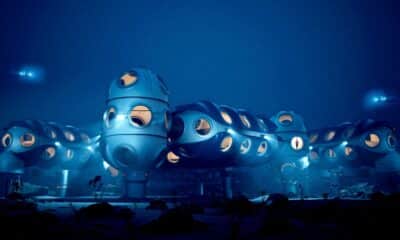Motivational
New Rewilding Shoes Help Grow Plants While You Jog in Nature
Rewilding Shoes
Imagine going for a walk or jogging in a cool forest, and actually helping restore and preserve the earth every step of the way. Rewilding shoes may look unusual, but this innovative new footwear may do exactly that.
Kiki Grammatopoulos, a master’s student at Central Saint Martins College in London has created a 3-D printed shoe outsole called Rewild the Run that spreads seeds while you exercise, helping people preserve nature while staying active.
How Rewilding Shoes Work
The sides of the rewilding shoes are covered with hooks and loops. The outsole can fit over regular shoes and the design was based on the naturally hooked spines that appear on such plants as the Cocklebur and Grapple Plant.
Many species in the world of plants use hooks to attach themselves to animal fur. They are then carried to a new location where they drop back onto the earth and take root, producing a new plant. This process, called epizoochory, is a common method of plant dispersal and reproduction.
The hooks on the rewilding shoes are designed to pick up these kinds of seeds during the natural activities of walking or running in wilderness areas, allowing new plants to be seeded in other places.
The shoes are also designed to follow in the footsteps of the bison, another critical member of the natural world. The bison is considered a keystone species, a plant or animal that plays a critical role in its environment.
The hooves of the bison are very unique. They churn the soil as they walk, allowing vital air and moisture to enter under the surface and keep the soil healthy and fertile. They also press dropped seeds into the newly aerated soil, allowing them to take root and grow. The rewilding shoes are designed to mimic this cycle.

What is Rewilding?
Rewilding is the act of returning an area of developed land to its natural and pristine state. Scientists estimate that we have lost over 10% of our total wilderness in the last 20 years alone. 3.3 million square kilometers of wilderness have been lost. That’s roughly two times the size of Alaska.
Many people in cities feel disconnected from nature. Eco-roofing—growing trees and plants on roofs and in indoor spaces—has been shown to be very beneficial in giving more life to cities, and now, with Kiki Grammatopoulos rewilding shoes, there is another way to help preserve nature in cities.
How Does Rewilding Work?
A relatively new movement—but not as new as the rewilding shoes—urban rewilding takes place in spaces such as parks or abandoned city lots.
Carefully chosen indigenous plants and trees are planted in the area based on which ones are likely to be most beneficial to the ecosystem. Then, human interference is kept at a minimum allowing ecosystems to restore themselves while plants and animals flourish.
Not too long ago, rewilding was used to restore a large piece of former farmland in Ranthambore. The Ranthambor National Park is now home to endangered species of tigers as a result.
Why is Rewilding Important?
There are many reasons why rewilding is important:
- Improves air quality: Rewilding involves planting gardens and trees or allowing plant life to grow naturally in urban areas. Plant life absorbs carbon dioxide out of the air and leaves behind a cleaner, fresher deep breath for the rest of us.
- Improves water quality: Paved areas prevent rainwater or melting snow from absorbing into the ground. Often, this water winds up in our water supply, bringing with it pollutants that it picks up from whatever street, sidewalk, or construction site it runs through. The existence of plants and soil gives the runoff a place to be absorbed and filtered before it reaches our drinking glasses, creating a nature-based solution for cleaner water.
- Protects from drought, fire, and flood: The moisture held by the plant roots is eventually released from leaves into the air to become cloud cover and humidity. When the moisture levels in the air are kept at a healthy level, the chances of serious events such as droughts, fires, and floods are reduced.
- Promotes mental health and wellness: It has been proven that time spent in nature can decrease stress levels, blood pressure, and physical issues. The act of “Earthing” has even been shown to boost sleep quality and even stop painful inflammation in as little as 15 minutes

IC INSPIRATION
One of the most amazing examples of rewilding is happening in the city of Singapore.
As the second most densely populated city in the world, Singapore is the last place you would expect to find lush greenery and trickling waters. Yet, it’s all there in the middle of the buzzing city.
To make way for the 700-square-kilometer urban centre, over 95 percent of the area’s vegetation was destroyed, along with 67 percent of its bird species and 40 percent of the mammal population.
As buildings and sidewalks took priority, air pollution rates soared. By 1996, Singapore had one of the highest emission rates in the world.
In 2002, Singapore’s decade-old green plan was revitalized with a focus on air quality, land and water quality, and nature and public health. This is very similar to what Vienna has been doing for over a decade. Vienna was ranked the number one city to live in the world, and much like their green roof initiatives, over 100 buildings in Singapore now have rooftop gardens that produce food and promote recreation.
Singapore also has more than 90 miles of canopied corridors that provide unimpeded passage for animals and butterflies from one green area to another.
One of the city’s most distinctive and beautiful features is its Gardens by the Bay. A seaside park, this lush, forest-covered area features 18 ‘supertrees’. These are man-made, roughly tree-shaped structures that provide many of the benefits of the natural trees around them, but also house and shelter many species of indigenous plants and flowers.
So, does rewilding help?
Absolutely!
Singapore has gone from one of the most overpopulated and polluted cities in the world to one of the most inspirational. As other cities around the world look toward embracing the rewilding, you’ll be seeing more of these shoes in the future.
Motivational
How Do I Become an Entrepreneur? The 5-Step Guide No One Tells You About

How do I become an Entrepreneur? Step-by-Step Guide Plus Answers to Important Questions
Becoming an entrepreneur is not just about starting a business; it’s about building something every single day, whether or not you see immediate results. The right mindset is what keeps you going when there’s no guarantee of success. This is the mindset of consistency, adaptability, and controlled detachment—where you give your business daily effort, yet don’t let it consume your entire life.
A great entrepreneur works every day on their business, but they also know when to step away and let the work settle for the day. The key is structure—structure to help you build it and structure to help you enjoy building it. Without that, you risk burnout. Growth takes time, but if you’re consistent, it pays off.
So remember—it can take a long time, but when it happens, it happens fast.
How to become an Entrepreneur: Step-by-Step Guide
Step 1: Finding the Right Business Idea
Sometimes, the best ideas aren’t created; they’re formed. They come in little pieces here and there. You might have some idea of what the idea is, but not the idea itself. If that’s you, then you haven’t developed the full picture yet, and you need to start taking to other people. But not to pitch your idea—to listen.
Talk about what you’d like to do, what excites you, and pay attention to how people react. Do they engage? Are they genuinely interested? Do they offer advice? If not, ask for their thoughts and advice. People will tell you what they’d like to see from the idea, and in those conversations, your best ideas will form.
Granted, those people need to be the right people, and you’ll find out who the right people are later in this article.

What’s the Best Way to Test a Business Idea?
To test your business ideas, don’t just think about it—put it out there. If you are passionate about it, then don’t hide it. If you don’t get results, post it out there again. If nothing happens, keep refining and keep showing up. If you want immediate feedback, find mentors and people working with you—you can bounce ideas off each other and push forward, either together or separately.
How to Test If Your Business Idea Will Succeed
| Test Method | How It Works | Why It’s Effective |
|---|---|---|
| Observe Engagement | Pay attention to how people react before you sell. | If they’re interested, there’s potential. |
| Run a Small Test | Offer a free or low-cost version to see if people engage. | Real-world feedback is more valuable than theory. |
| Ask for Feedback | Talk to potential customers about their needs. | Direct insights help refine your idea. |
| Adapt to Data | Change the approach based on real responses. | Great ideas don’t fail; they evolve. |
| Ignore Assumptions | Challenge your own expectations and theories. | Forces objectivity and improvement. |
Passion vs Profit: What Builds a Stronger Business?
Some say to follow the money. Others say to follow your passion. The truth? It depends on you.
If you’re in it just for the money, then you might be inclined to focus on something profitable over something you’re passionate about. Or maybe your passionate is being profitable, in which case, if you follow the money you’ll follow your passion.
But in my experience, I can only devote my full attention and effort to something I’m passionate about it, and full effort and attention is needed to build a strong business as an entrepreneur.
So, go toward what you enjoy doing, and if you are passionate about making profit, then there is nothing inherently wrong with that. Making money is an art in itself; in fact, with money, you can buy all the art in the world.
Passion allows you to stay consistent when results are slow—which is inevitable at first—and consistency is the only path to success.

Step 2: Starting Without Overthinking
Too many people never start becoming an entrepreneur because they feel like they need to have everything figured out. But if you had everything figured out, there would be nothing left to do.
Would you rather be bored or discover things? Remember, you don’t need all the answers—you just need to begin little by little.
Should You Go All in on Your Business Idea or Start on the Side?
Your situation matters. If you have a family, kids, or financial responsibilities, start on the side. Keep your job and build slowly. But if you’re younger—say, in college or living with your parents—you have an opportunity to go all in, or at least more all in.
But even then, you’ll need money to become an entrepreneur, so starting on the side while you continue to work might be your best bet. (Later in the article, we’ll cover how much money it takes to start a business).
Every situation is unique, but the rule stays the same: do something every day. A little effort, consistently applied, will help you turn your idea into a business.
Step 3: Learn from the Right People
You don’t need a business degree to become an entrepreneur, but you do need the right influences.
Find a Mentor
Keep in touch with people older than you, people who have made money, built businesses, and seen real success. Respect them. Check up on them. Network with them. People love to teach, and when you treat them as someone you can learn from, you might be surprised by how much they can help you become a successful entrepreneur .
Put Yourself in Positions of Responsibility
One of the best ways to prepare for entrepreneurship? Volunteer in positions where people depend on you. Because once you’re in business, people will depend on you—your team, your clients, your partners. Learn how to handle that now.
Should Entrepreneurs Know Sales and Marketing?
If you know how to sell, you can market, and if you know how to market, you can sell. And you can hire someone to do both sales and marketing. However, you can’t sell, market, or hire the right talent if you don’t know how to communicate with different people. Communication is the number one skill you need to master to become an entrepreneur.
Focus on engaging with others, and the rest will follow. That said, don’t just wait for skills to appear—try things. Take a course, practice selling something, join a group, volunteer. Many entrepreneur start with one skill, and eventually they branch into others.

Step 4: Managing Money & Risk
How Much Money Do You Need to Start a Business?
Most businesses will require at least $20,000 to start, but that varies depending on what it is. But business costs don’t always come up front, they are usually recurring, especially online businesses. If you can save $5,000–$10,000 for you’re online business, that’s a good start. Having a stable income also helps a lot, which is why it may be smart to have a job while building your business.
Should you save money or get investors to start a business?
It depends. Investors only invest in things that will pay off for them. It’s not just about your pitch—it’s about you.
Are you someone people would want to work with? Do you apply yourself? Are you trustworthy and driven? If you build strong relationships with successful people, they could become your investors—but always work like you need to fund it entirely by yourself, even if you don’t.
And when you feel like you are in a good position to pursue your business full-time, don’t quit your job too soon. If you burn through your savings before your business is stable, you’ll have to stop to make money again. That kind of stop-start cycle can be more damaging than slower progress.
Step 5: The Long Game – Staying Consistent
How Long Does It Take to Start Your Own Business?
Realistically, creating a functional business will take between 3-5 years. And even if it doesn’t, the only right answer is to assume that it’s going to take you that long. If you’re still motivated after that, then that’s a good sign that you have what it takes to become an entrepreneur.
What’s the Best Way to Handle Burnout as an Entrepreneur?
The single best way to avoid burnout as an entrepreneur is to get high-quality sleep—nothing else even comes close. Your day as an entrepreneur requires energy and attention, and sleep powers you up with both, while the lack of sleep drains you. Don’t organize your sleep around your day; Organize your day around your sleep.
- Do things that will give you energy in the day while also helping you sleep at night. Read our article January Brain for a list of these things.
- Let go of work at night, it will always be there tomorrow. Create a wind-down routine at least two hours before bed by doing something that relaxes you. That could be reading, meditating, or even watching a show or playing a game. But if you do use the TV, wear blue light blocking glasses.
- Help increase the quality of your sleep by simple methods like earthing and doing things that might increase your REM sleep
How to Become an Entrepreneur Step by Step
| Step | Action | Key Takeaway |
|---|---|---|
| 1. Find the Right Business Idea | Talk to people, listen, and test ideas. | Passion fuels consistency, but profit matters if you need money now. |
| 2. Start Without Overthinking | Just begin. You’ll never have everything figured out. | If you have responsibilities, start on the side. If not, go all in. |
| 3. Learn from the Right People | Find mentors, stay around successful people, and take responsibility. | People love to teach—show up, network, and learn. |
| 4. Manage Money & Risk | Expect to need $20,000+ over time. Save, work, or find investors. | You can’t do this for free—funding is essential. |
| 5. Stay Consistent | Work every day, even if progress is slow. Prioritize rest and routine. | Success takes 3-5 years—but when it happens, it happens fast. |

How to Really Turn Your Idea into a Business
Turning your idea into a real business is about testing, refining, and executing. Many people stay stuck in the “idea phase” because they overthink it—but real entrepreneurs take action. Here’s how to move from an idea to execution:
- Validate Your Idea – Before fully committing, you need to verify that your idea is viable. Share it in conversations, online communities, and industry groups. Observe how people react—curiosity and excitement are good signs. If you can explain the value clearly and receive positive feedback, you’re on the right track.
- Set Up the Basics – Instead of wasting time on unnecessary details, focus on the essentials: register your business, create a simple landing page, and make sure you can accept payments and provide invoices.
- Get Your First Customer – Your first sale is proof that your business can work. If needed, offer your product or service at a discount or even for free to build credibility.
- Build Your Online Presence – A website is like a physical storefront—you wouldn’t rent a store if you weren’t ready to do business. Get a professional website built through a hosting platform and start selling. Don’t waste time trying to build it yourself—focus on running your business.
- Don’t Chase Perfection – Perfection is the enemy of execution. If you can take payments, provide the service, and things flow, start now and refine as you go. Waiting for the “perfect moment” means you’ll never start.
Reasons to Become an Entrepreneur
Unlike what you’ve probably been told, the best reason to become an entrepreneur is not for freedom—it’s for opportunity.
Being an entrepreneur is hard work. You have to consciously give it hours from your day—it doesn’t just fit into your schedule; you have to make space for it. It’s not about escaping a job; it’s about creating something meaningful at work. This requires discipline, and you don’t learn discipline to be free, you learn it to create opportunity.
Opportunity is real freedom.
Instead of freeing up your time, give your time to what you love.
Entrepreneurship teaches you everything—how to sell, hire, fire, teach, and most importantly, learn. You become more resourceful, more intelligent, and more adaptable. If you want to 10x or even 100x your money, entrepreneurship makes that possible—but only if you’re willing to put in the work.
The Benefits of Becoming an Entrepreneur
The biggest benefit of becoming an entrepreneur is growth.
You’ll learn to problem-solve at the highest level, because without it, you’re toast. You’ll learn how to listen. You’ll develop skills that make you valuable in any environment—selling, strategizing, building, and leading. These are all skills needed to become an entrepreneur.
You’ll start to feel like you’re unstoppable, because you’ll know how to figure things out.
And yes, wealth is a huge part of it. If you put in the work, you can build wealth beyond what any job can offer. But it’s not just about money. It’s about creating something that has value, something that impacts people, something that lasts.
What to Consider When Deciding to Be an Entrepreneur
Consider that there will be many instances where you fail, but you need to learn to consider failure as the sacrifice you make for learning. In fact, you don’t even make that sacrifice yourself, the entrepreneurial journey makes it for you. It’s as though everything wants you to grow, and that’s how should look at it.
- Entrepreneurship is stressful—but learning to manage stress is growth.
- Entrepreneurship is unstable—but learning to be resourceful is growth.
- Entrepreneurship is uncertain—but learning to stand tall in uncertainty is growth.
If you can’t sacrifice the time, money, and most importantly, your ideas, then being a successful entrepreneur will be very difficult. And that’s okay. Not everyone has to be an entrepreneur to live a successful life.
The truth is, not everyone should do this. It’s not easy, and it requires the development of a mindset people don’t naturally have.
But you don’t need to be an entrepreneur to grow skills and wealth. Look at businesses—you have CEOs, directors, specialists. These people aren’t entrepreneurs, yet they have wealth, opportunities, and impact. If you’re involved in what you do, and if you work at it every day, doors will open.

What to Study to Become an Entrepreneur
Many people believe they need a business degree to become an entrepreneur. The truth? Experience is your best teacher. A degree in business won’t teach you how to be an entrepreneur, but it might create an environment where you learn the skills that matter—like communication, problem-solving, and application.
If you choose school, make sure it’s an interactive experience, not just passive learning. Courses and mentorships can be as powerful as degrees because they involve real engagement and application. Mentorship is especially valuable—learning from someone who’s already doing it accelerates your own growth.
But remember, you don’t have to wait to be mentored—you can be a mentor. Teaching others what you know forces you to understand it at a deeper level, and that, in itself, is one of the greatest entrepreneurial lessons.
Can I become an entrepreneur with no money?
Yes, you can become an entrepreneur without money. In fact, many successful entrepreneurs started with zero funds—or even in debt. The reality is that having no money forces you to be resourceful, creative, and adaptable, which are the very qualities that make a great entrepreneur. If you don’t have money, you have to use your time, skills, and connections to create value.
The biggest misconception is that money is the only thing stopping people from starting. It’s not. A lack of action is. Money helps, but it’s not the deciding factor. If you’re willing to work, network, and offer something valuable, doors will open. Many entrepreneurs start by offering services, building small projects, or negotiating creative deals to get what they need.
Here’s how you can become an entrepreneur without any money:
- Freelancing First – Start by offering a skill you already have. This generates income and experience. For example, I started as a freelance writer, which eventually led to a Search Engine Marketing Agency.
- Leverage Free Platforms – Use Upwork, Fiverr, or LinkedIn to find gigs. Offer to do the first project for free in exchange for a paid follow-up. If they insist to pay you, then insist to do it for free. Do an amazing job, and that first client can turn into many.
- Find Investors or Profit-Sharing Partners – Instead of taking on debt, negotiate with someone who believes in your idea. Offer them a deal like percentage of future profits instead of equity.
If you have nothing, then gaining anything is something. Start small, build connections, and keep going.
How to become an entrepreneur without any money
| Method | How It Works | Why It’s Effective |
|---|---|---|
| Freelancing | Offer a service (writing, design, consulting) to earn money. | No upfront costs, builds credibility. |
| Free Platforms | Use Upwork, Fiverr, or LinkedIn to get clients. | Exposure to a global market. |
| Profit-Sharing Deals | Partner with investors willing to fund you for a share of profits. | Avoids debt, brings in resources. |
| Skill Swaps | Trade your expertise for services you need (e.g., marketing in exchange for website design). | Cuts costs, builds relationships. |
| Networking & Mentorship | Connect with experienced people who can guide you. | Opens doors to opportunities and funding. |
How to Become an Entrepreneur at 18
If you’re 18 and want to become an entrepreneur, Start immediately. Not by launching the next billion-dollar company overnight, but by involving yourself in something you enjoy. Nothing happens quickly—until it does. One day, after years of consistent work, you’ll find that your business grows fast. When that day comes, ask yourself: do you even remember how you got here?
It’s about applying yourself now, in small ways, every single day. If you’re 18 and want to be an entrepreneur, don’t wait for the perfect moment. Start learning, start networking, and most importantly, start doing. Having a mentor helps critically—someone you can bounce ideas off, someone who holds you accountable. If that person works with you? Even better. Nobody can do it alone.
Heman Bekele was only 14-years old when he created a bar of soap that helps cure skin cancer. Good ideas just require involvement, and eventually, action.

What Skills Does an Entrepreneur Need to Be Successful?
Being an entrepreneur isn’t just about having a great idea—it’s about developing the right skills to bring that idea to life. Here are some of the most crucial abilities every entrepreneur should master:
- Negotiation & Communication – Success in business comes down to how well you can work with others. Whether it’s securing a deal, refining your team’s work, or resolving conflicts, strong communication is key. For example, an entrepreneur needs to know how to inspire—when giving feedback, highlight what’s working before addressing what needs improvement.
- Interviewing & Hiring – Knowing how to interview and evaluate people is one of the most valuable skills in business. You can’t build a great company alone, so learning how to assess talent and create strong professional relationships is essential. Cherish your interviews! They are incredible learning tools.
- Organization & Note-Taking – If you’re not taking notes, you will forget important details. Keeping track of conversations, progress, and ideas will make scaling your business much easier.
- Delegation – You don’t need to know everything—you need to know how to find and manage the right people. Entrepreneurs who try to do everything themselves burn out quickly. Learn how to identify what you should handle and what you should delegate.
- One-on-One Leadership – Texting and emails have their place, but real leadership happens in one-on-one meetings. Being able to talk directly with employees, inspire them, and guide them through challenges will set you apart as a business leader.
What to Do When Progress Feels Slow
You might do dozens of things for your business in a day and still feel like the progress is slow. But when progress feels slow, there’s one thing you should know: If you made one productive move for your business today, just one, then consider that a win.
Keep working. Every single day. Whether you lost money, made money, or nothing happened—you moved forward. And that’s what matters as an entrepreneur.
How do I become an Entrepreneur: Final Thoughts
Stars spend millions of years building elements within themselves. Then one day, in just instant, they explode and spread elements throughout space. These are the same elements that went on to create all life on Earth (10 Amazing Facts About Stars).
Your entrepreneurial journey is similar—You’ll spend years building the character and mindset needed to tun your ideas into a successful business, but when it does, it happens fast.
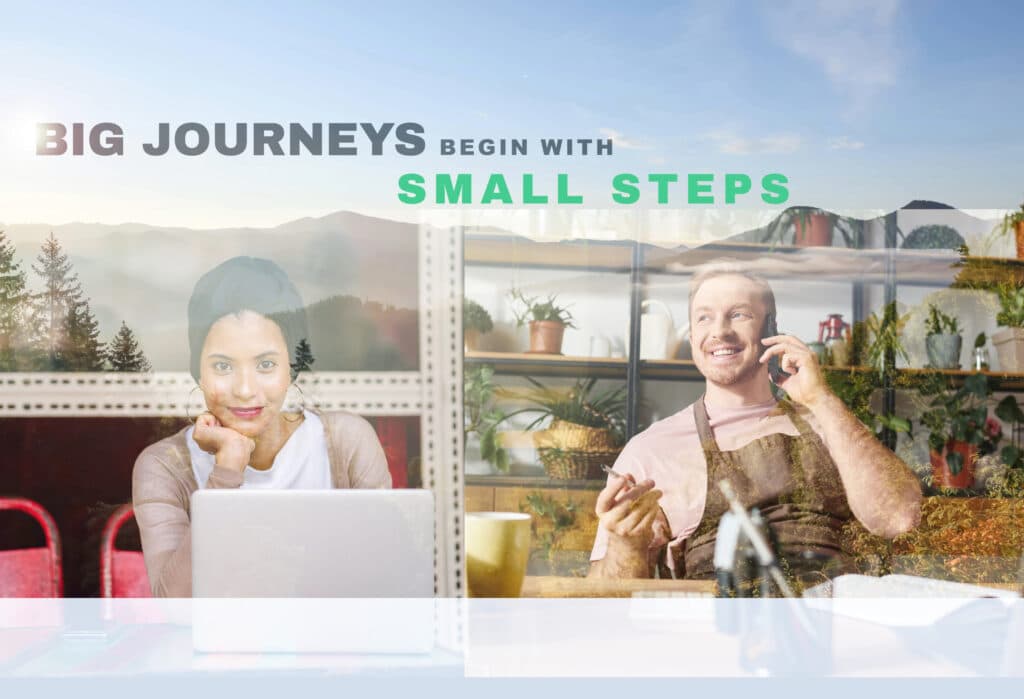
IC INSPIRATION
So many people have told me that money can’t buy happiness. I always found this peculiar because if money can’t buy you happiness, then it can’t buy you unhappiness either.
But has anyone ever told you that money can’t buy you unhappiness?
Probably not, because society likes to talk about what makes you unhappy more than they like to talk about what makes you happy. The result?
Wealth is often frowned upon. Money is thought to be the root of all evil, but anything that you can define as evil existed long before money was invented.
The most successful entrepreneurs didn’t become wealthy because they wanted happiness; they became wealthy because they loved taking action. Just as evil existed long before money was invented, actions exist long before you become wealthy.
When someone asks me if I think money can buy happiness, I ask them if they think words can buy action. Because whether money makes you happy or unhappy has nothing to do with money, but everything to do with character.
What did you do on your journey to becoming a successful entrepreneur? That will determine whether money can buy you happiness or not.
- Did you convince yourself that you’re a failure after not landing that big deal with a client, or did you see it as an experience that you have learned from?
- Did you take out your business frustrations on the people who love you, or did you become even more compassionate with them?
- Did you accept that big deal you new would compromise your values, or did you walk away from it because you know that other opportunism are there.
All these things will decide whether you are happy or unhappy, regardless of how wealthy you become. So, the next time someone tells you that money won’t buy you’re happiness—and believe me, on you’re entrepreneurial journey, it’ll happen many times—tell them this:
Money won’t buy my happiness but my actions will. And making money is all about action.
Motivational
January Brain Exists, But You Can Beat the Winter Blues. Here’s How
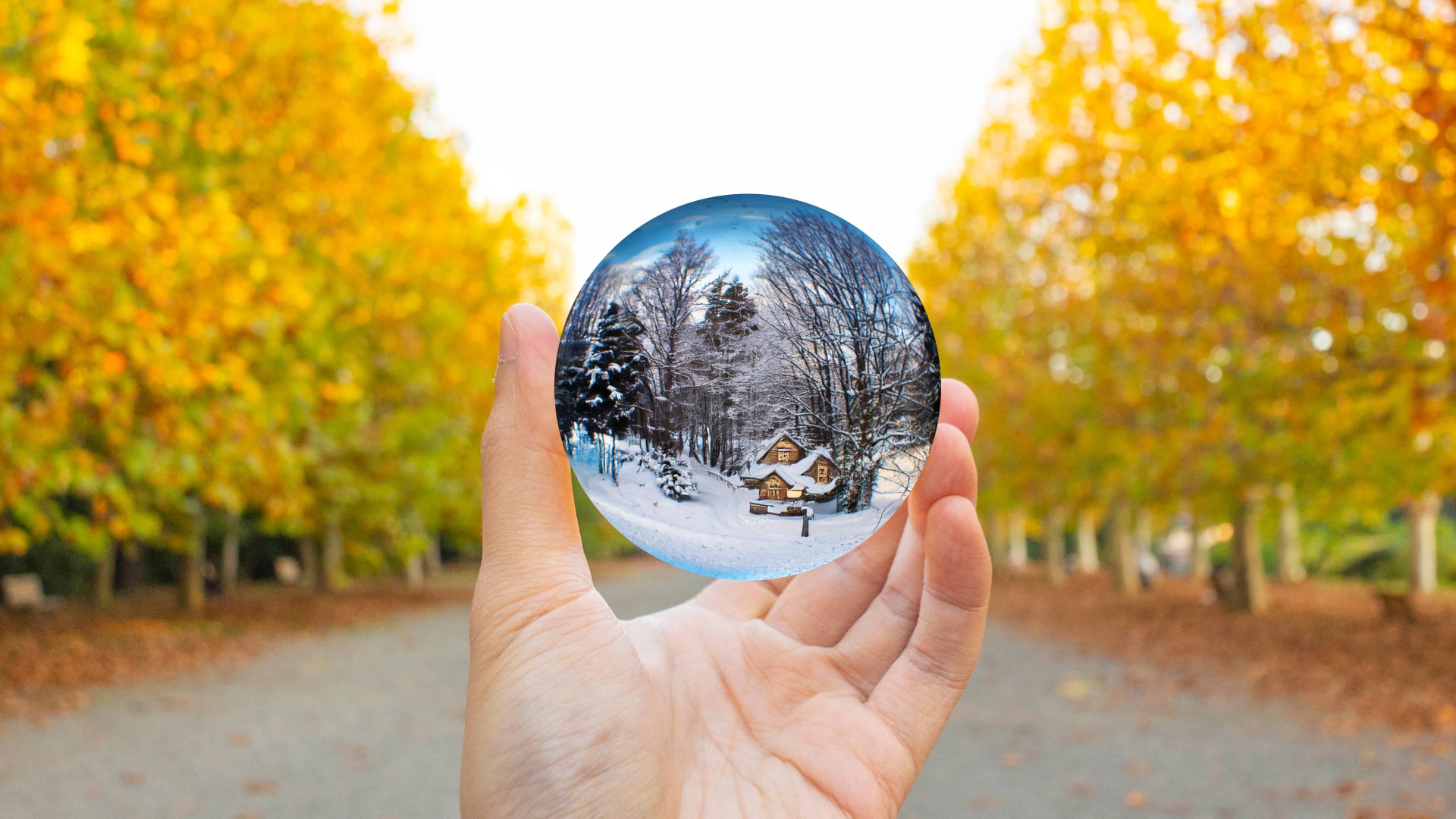
January Brain
January brain—otherwise known as the winter blues—is a phenomenon where people feel more sluggish and tired in the wintertime, particularly during the month of January. The idea is that different seasons have a biological impact on how the mind functions.
An 18-month study took 28 healthy individuals and placed them in a controlled indoor environment without any seasonal cues for 5 days throughout the year. Placing participants indoors removed sunlight, and this allowed the researchers to see how seasons affect the brain without outside influences. They found that on average, their brain function relating to attention was best in the summertime (June) and worse in the winter (January).
This has led to the idea that January Brain is a biological phenomena; That we indeed function at a lower level in the winter than we do in the summer, even without any stimulus from the natural environment.
Just to be clear, that is not what the study has proved; It’s just an idea. Many people thrive in the winter, some even more than in the summer. These people have particular ideas about the cold season, and it turns out that ideas can influence how well your brain functions, regardless of the seasons.
Could your ideas be the cause of your winter blues?
In this article, you’ll find out why you feel more tired in the winter, and even how you can override your winter blues with scientific methods that can boost your motivation in even the darkest winters.
Why Do You Feel More Tired in The Winter?
Our body has a 24-hour internal clock called the circadian rhythm that determines our sleep-wake cycle. The circadian rhythm regulates the hormone melatonin which promotes sleep, making you feel tired. Melatonin levels increase in darkness and decrease in light.
In the wintertime, days are shorter, which means more darkness, and therefor, higher levels of melatonin. This can make you feel more tired in the winter.
The summer season is quite different. Days are longer, so there is more light and less darkness, meaning that you will have less melatonin and higher levels of energy and alertness.
Our internal clock has two cycles: Wake and sleep, and it changes based on the amount of light we get, which changes from season to season.
| Season | Wakefulness or Sleepy? | 24 Hour Clock |
| Summer | Wakeful: Long days and less melatonin | 14-16 hours of wakeful, 12 hours of sleepy |
| Winter | Sleepy: Short days and more melatonin | 8-10 hours of wakeful, 14-16 hours of sleepy |
| Fall/Spring | Balanced: Best for our circadian rhythm | 12 hours of wakeful, 12 hours of sleepy |

So, the winter blues has some biological truth behind it, and by now, you’re probably asking a very important question:
Is the winter blues entirely biological, or can you override it?
I’ll save you the suspense by telling you that yes, you can absolutely override your winter blues; in fact, it might even be easier than you think, and this article will show you how.
But for all of you knowledge-hungry inspirers out there, here’s a little more helpful information about the reality behind your winter blues.
Is January Brain a Biological Phenomenon?
Let’s think about this for a moment. In the studies showing how seasons affect brain function, people lived indoors without any exposure to natural light/dark cycles of the environment. On average, the participants showed worse brain function related to attention in the winter compared to the summer.
This is interesting because physical exposure to seasons (sunlight and darkness) is what influences mental alertness. However, the participants in the study had no stimulus from the external environment and on average, still functioned worse in the winter than in the summer. Basically, the body—or the mind— knows which season it is without physically being outside to experience those seasons. This could mean two things:
- Previous seasonal exposure persists: Meaning that, if you entered the lab in the winter, it might be that the circadian rhythm would continue to function as if it’s winter (low melatonin, less alert). It would work the same way for summer.
- Thoughts influence how the brain function regardless of the season: Thoughts also persist. Meaning that, if you hate the month of January, you will probably feel more tired and less alert. Afterall, not all the participants had the same result.
While January brain—aka the winter blues—has some biological implications due to seasonal changes of the circadian rhythm, it could also be the result of the mindset a person has about winter. Motivation is difficult to come by when you dislike something, and it could leave you feeling unmotivated and tired. In fact, surveys show that January is the most hated month on the planet.
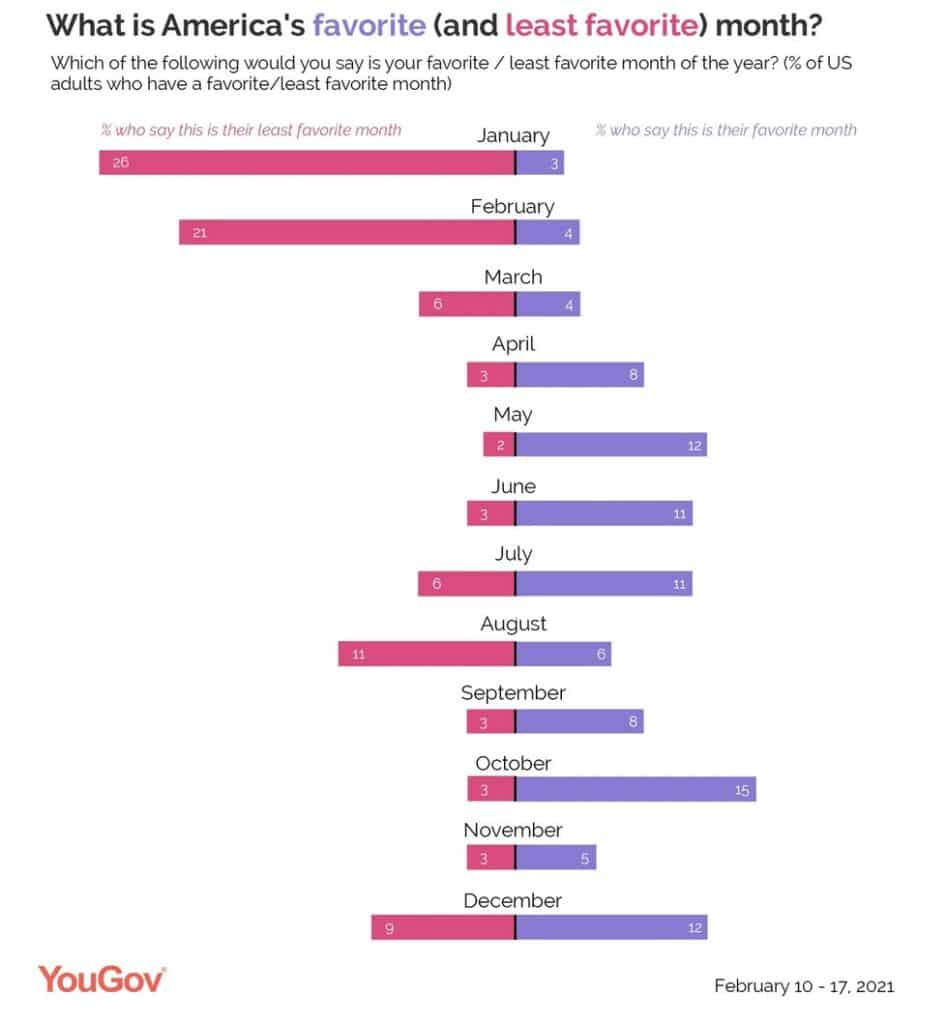
How to Beat the Winter Blues
The winter blues can stem from high levels of melatonin due to shorter days which can leave people feeling tired and less energetic. We don’t entirely have control over our circadian rhythm, but we do have control over things that can boost energy levels.
If you want to beat the winter blues, think in terms of energy. Boosting energy levels can override the feeling of sluggishness you might feel in the winter. Here are some science-backed things that you can do to raise your energy levels and help you beat the winter blues.
- Get in All of Your Vitamins, Not Just Vitamin D. Vitamin D is created from sunlight, so it’s especially important that your body has good amounts in the wintertime; However, vitamin D won’t be as effective without other vitamins. Different vitamins compliment each other, especially the fat-soluble ones. For example, vitamin D helps your body absorb calcium, but vitamin K2 is responsible for transporting it throughout your body. This is the reason why you will often find that one fat soluble vitamin is grouped with another.
- Increase Sleep Quality, Not Quantity: If you are already feeling more tired in the winter, then sleeping more will add to the problem. When your quality of sleep increases, the quantity of your sleep naturally decreases. This is because high-quality sleep allows you to go through the sleep cycles quicker. High-quality sleep can do wonders for your January brain fog. There’s a supplement called ZMA (Zinc, Magnesium, and Vitamin B6) that can help increase the quality of your sleep. In addition to that, you can learn how to increase REM sleep and recharge your mind tonight!
- Exercise in The Mornings, Not in The Evenings: Morning exercises have been shown to counteract the increase in melatonin during shorter daylight hours. This is because morning exercises delay circadian rhythms. A delayed circadian rhythm pushes the bodies internal clock to a later time so that you don’t feel tired in the evening, making you more energized. On the other hand, evening workouts advances circadian rhythms, meaning that it pushes the bodies internal clock forward, making you feel tired much earlier.
- Choose a Diet With Higher Protein: Studies have shown that a high-protein diet makes the body work harder to digest food, burning more energy and contributing to feeling more full and energized. When a person eats protein, their body burns 20-30% of those calories just to digest it. Even more amazing is that for every 10% more protein you eat, your body burns an extra 29 kilojoules of energy. For example, if 30% of your calories come from protein, your body will burn about 58 kJ more per day than if you ate only 20% protein. This is unheard of with carbs and fats. Lean sources of protein keeps you full and energized for longer, and by the time your next meal comes around, the protein from that meal keeps you energized for another few hours up until the time you go to bed.
| Macronutrients | Thermal Effect of Food | Energy Boost |
| Fats | Low (0-3%) | Very little energy burnt. Not much energy boost. |
| Carbohydrates | Moderate (5-10%) | Give off moderate boosts of energy |
| Proteins | High (20-30%) | By far the best for increasing energy levels |

Changing Your Idea About Winter Can Help You Thrive More
One thing is almost certainly true: If you begin to find things that you like about January, it might not change your circadian rhythm, but it will get you out of bed quicker on a cold winter morning.
Some people function at their best in January. Katie Camero is a health reporter for BuzzFeed, and she’s one of them. Her reasons for liking the month of January are not tremendously big reasons, but they’ve allowed her to thrive in the winter, even more than the summer.
And if you’ve ever met someone who looks forward to the winter, then you’ll probably notice that they also look forward to the little things. So, for every breezy winter morning, step outside and take a deep breath of cool winter air. Enjoy it. Sleep well, eat good, and do morning exercises for at least a few days in the week.
Keep a log. Compare the days that you try these energy boosting methods with the days you don’t. If you find that you have more energy, you might start to love that feeling, and that’s what’s going to keep you consistent with it.
And who knows, this could be the winter where you thrive; making all the future winters to come even better than you can imagine.

IC Inspiration
Today, you got some tips on how to beat the winter blues.
I know that phrase is a figure of speech, but that’s quite the idiom. You want to beat a pinata, not your winter blues. Winter never fought anyone, and like most things in life, if you give it some credit, it might give you something back. So, give it a little hope and gratitude; there are many small things that can make you happy in big ways.
Napoleon Hill thought that thoughts are energy. In his book Think and Grow Rich, he even went as far as to say that thoughts vibrate and travel through the air, or ether, as he called it.
I don’t think that’s entirely correct (but then again, I’m not quite sure if I’m richer than Napoleon Hill was).
I think that ideas travel, not thoughts.
My take is that thoughts are inarticulate. They come and go, just like the winter season. Sometimes, they even come back around—a tale I like to call, there and back again.
But ideas are thoughts that have been articulated and brought outside the mind. Only then, when they are shared, do they begin to travel, touching other hearts and minds.
So, my idea is this:
Your circadian rhythm might have something to say about your January brain fog, but its you that has the final say. In addition to creating a more positive outlook about winter, use some of the science-backed methods provided in this article and see if they help raise your energy levels in the winter time.
Another thing that I would really like to see is a retake of the study Seasonality in Human Cognitive Brain Responses. It would be interesting to see them do the study over again, only this time, study the people who love winter to see if the results change.
Then, we can really know how much of an impact simple ideas have on January brain.
Afterall, “Seasonality in Human Cognitive Brain Responses” literally means “how our thinking changes with seasons”.
Motivational
Upside-Down Trains? Why We Should Be Seeing More of Them!
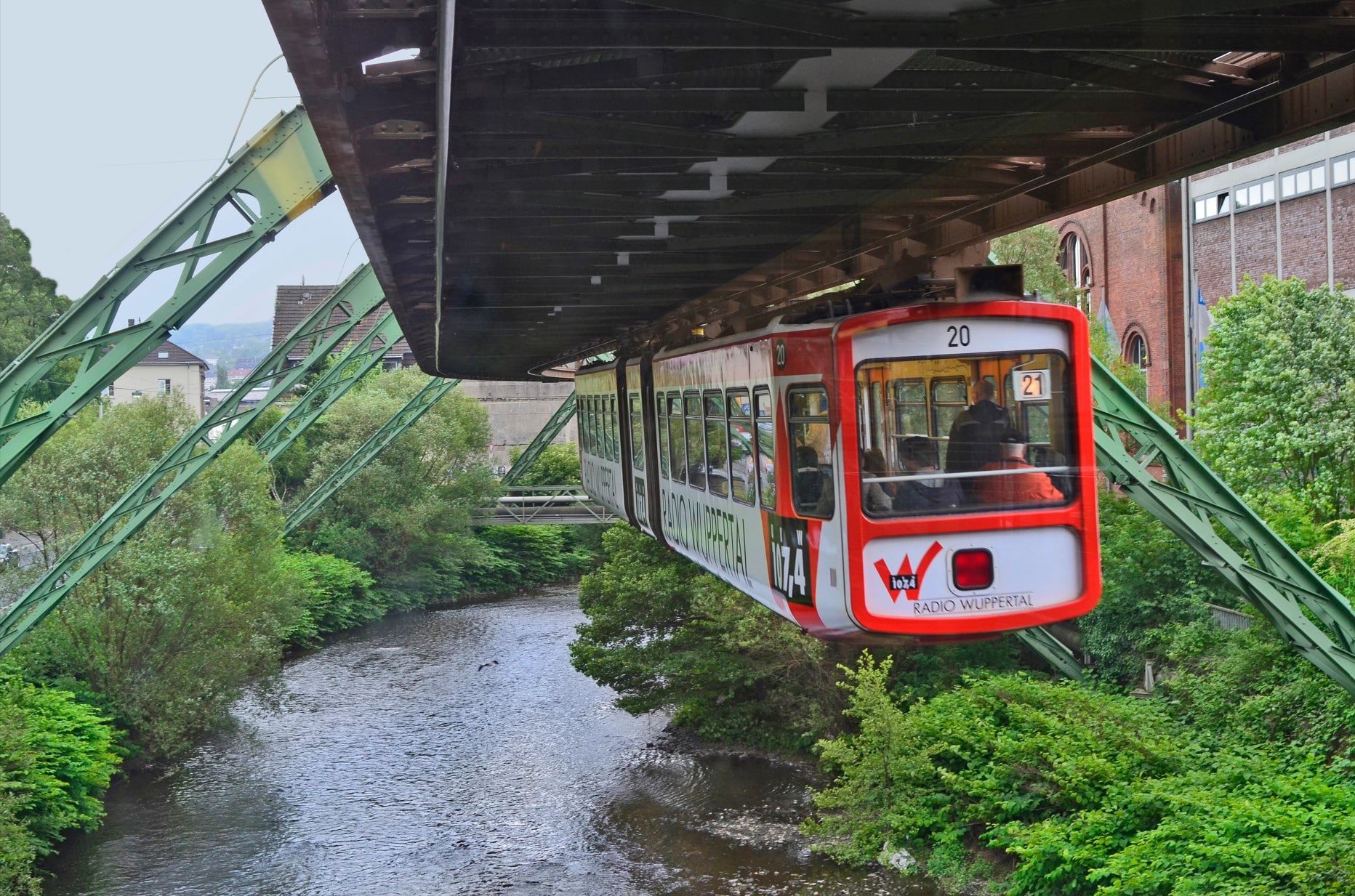
Upside-Down Trains
If you’ve never seen an upside-down train before, you’ll love this.
Okay, its not entirely true that this train is upside down—unless you’re considering the upside of the train being attached to the downside of a structure (which sounds even crazier). But whatever you’d like to call it, these trains are all the hype, and it has us wondering:
Could we be seeing more of these trains in the future and what would be the benefits?
What Are Upside-Down Trains Called?
The “upside-down train”, or “upside-down railways”, are really called suspension trains or suspension railways. This make sense because the train is literally suspended from an overhead track.
There are six operable “upside-down trains” in the world: Three in Germany, two in Japan, and one in India.
Upside-down Trains in Germany
The first concept for a suspension railway was developed in England in the early 1800’s, but the first successful one was built in Wuppertal, a city in Germany in 1901.
What made it so successful? Well, it’s still standing today, and it’s called the Wuppertal Schwebebahn.
Schwebe means to “float” or “hover” and bahn means “railway” or “train”. So, Schwebebahn can mean either “floating railway” or “hovering train”; both of which are very cool sounding alternatives to suspensions railways.
Wuppertal Germany is known for this particular suspension railway; in fact, this “hovering train” is cited number one for the top attraction in Wuppertal on Tripadvisor.
Why Are There So Many Hanging Monorails In Germany?
When a country is known for something because of its great success, they tend to ride the wave and create more of that thing. Afterall, that’s its pride and glory.
The U.S, as an example, has arguably produced some of the best movies on the planet. So, it’s no surprise that America is known for Hollywood entertainment, and the result is that the U.S. produces the most number of movies by far.
For this reason, you’ll find that the majority of hanging Monorails trains are located in Germany, and it turns out that there could be some subtle benefits to these railways.
Advantages of Upside-down Trains
The obvious advantage of upside-down trains is they avoid traffic congestion, saving commuters valuable time. This is true of regular monorails, but upside-down monorails can offer a slight advantage because they are very space efficient. In densely populated areas, space efficiency could mean significantly less traffic congestion, which could make them even more ideal than regular monorails.
A more subtle advantage is that views from high above are psychologically healthy. Infact, something as simple as a view from a window has shown to improve attention, reduce negative emotions, and even lower stress.
Passengers in the U.S. alone commute billions of kilometres a year on trains to and from work. Upside-down trains can make a positive difference for these commuters, especially if it provides a view of nature below.
Which brings us to the last advantage: Upside-down railways can be created with minimal environmental impact. It can navigate steep gradients, tight curves, and challenging terrain without disrupting natural landscapes. So, not only does it function like a regular monorail, but it provides the opportunity for some pretty amazing views of nature that boost the productivity of commuters as they head to work or school.
Where Are All the Up-side Down Railways Located?
- 1. Wuppertal Schwebebahn (Germany)
- Opened: 1901
Wuppertal Schwebebahn is the oldest and most famous hanging railway in the world. It runs over the Wupper River and streets of Wuppertal. It is a key part of the city’s public transport network. Imagine that!
- 2. Chiba Urban Monorail (Japan)
- Opened: 1988.
This is the world’s longest suspended monorail and it extends over 15 kilometers. It connects major areas in the city of Chiba and is used by both local commuters and tourists.
- 3. Shonan Monorail (Japan)
- Opened: 1970
The Shonan Monorail is arguably the most scenic suspended monorail, and it definitely has our pick. It runs from Kamakura to Fujisawa, which is about 6km, and offers commuters with some incredible views of the coastline.
- 4. Schwebebahn Dresden (Germany)
- Opened: 1901
This upside-down train is in Dresden Germany and is the second-oldest suspended railway in Germany.
- 5. Dortmund H-Bahn (Germany)
- Opened: 1984
This is the mode of transportation for the Dortmund University campus. It shuttles students and faculty between different areas. Talk about some lucky students.
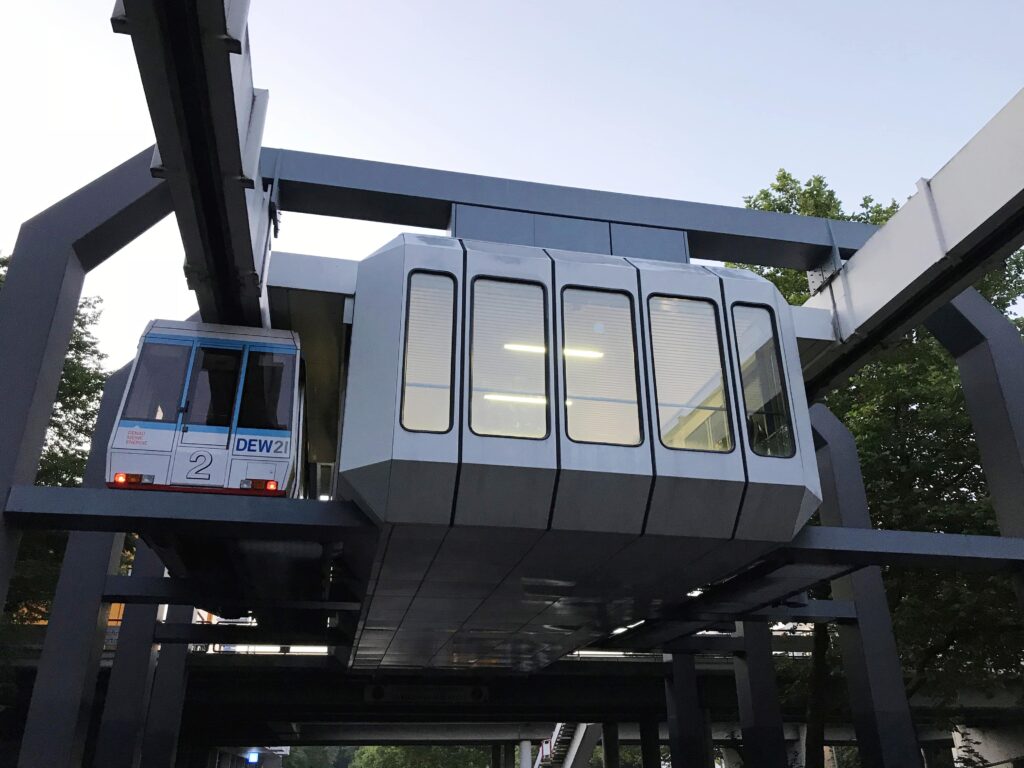
- 6. Skybus Metro Test Track (India)
- In the Works: 2004 (Test Operations)
This is a test track in Goa and is currently part of an experimental elevated rail system. It was introduced to address urban transportation challenges like traffic congestion, which is a huge concern in India. Trails started in 2004 and stopped shortly after, but interest still remains, and it’s likely that India could be the first to start seeing upside-down rails in the near future.
IC INSPIRATION
Have you heard of commercial hypersonic travel? It is a form of travel that can allow commercial aircrafts to fly at speeds that are approximately 5x the speed of sound.
In 2020, transportation tech company Hyperloop One conducted its first successful passenger test for a train that can travel at hypersonic speeds. Regular trains typically travel between 60-65 miles per hour; Hyperloop’s train travelled at a whopping 48 miles per second!
Talk about something straight out of a sci-fi movie. I spot some Hypersonic suspension trains in the future…
Maybe we can even call them “hypertension trains”.
-

 Science2 years ago
Science2 years agoThe Largest Body of Water in the Universe is Floating in Space. Can We Use It?
-
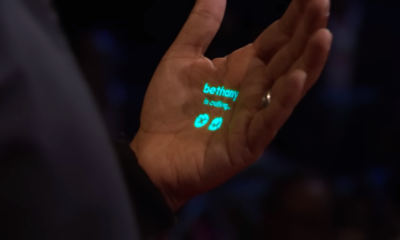
 Technology2 years ago
Technology2 years agoThe Humane AI Pin is Here! So is Everything You Need to Know
-

 Healthcare2 years ago
Healthcare2 years ago3D Printing in Hospitals Has Saved Children’s Lives
-

 Technology2 years ago
Technology2 years agoAlef Model A Flying Car Pre-Orders Surge to a Whopping 2,850
-
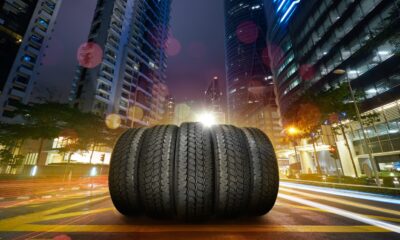
 Technology2 years ago
Technology2 years agoMichelin Uptis: Airless Car Tires Emerging in 2024
-

 Sustainability2 years ago
Sustainability2 years agoTeamSeas Uses Gigantic Robot to Battle Plastic Pollution
-

 Technology3 years ago
Technology3 years agoNew Atmospheric Water Generator Can Save Millions of Lives
-

 Sustainability2 years ago
Sustainability2 years agoArchangel Ancient Tree Archive: Cloning Ancient Trees to Build Strong Forests









